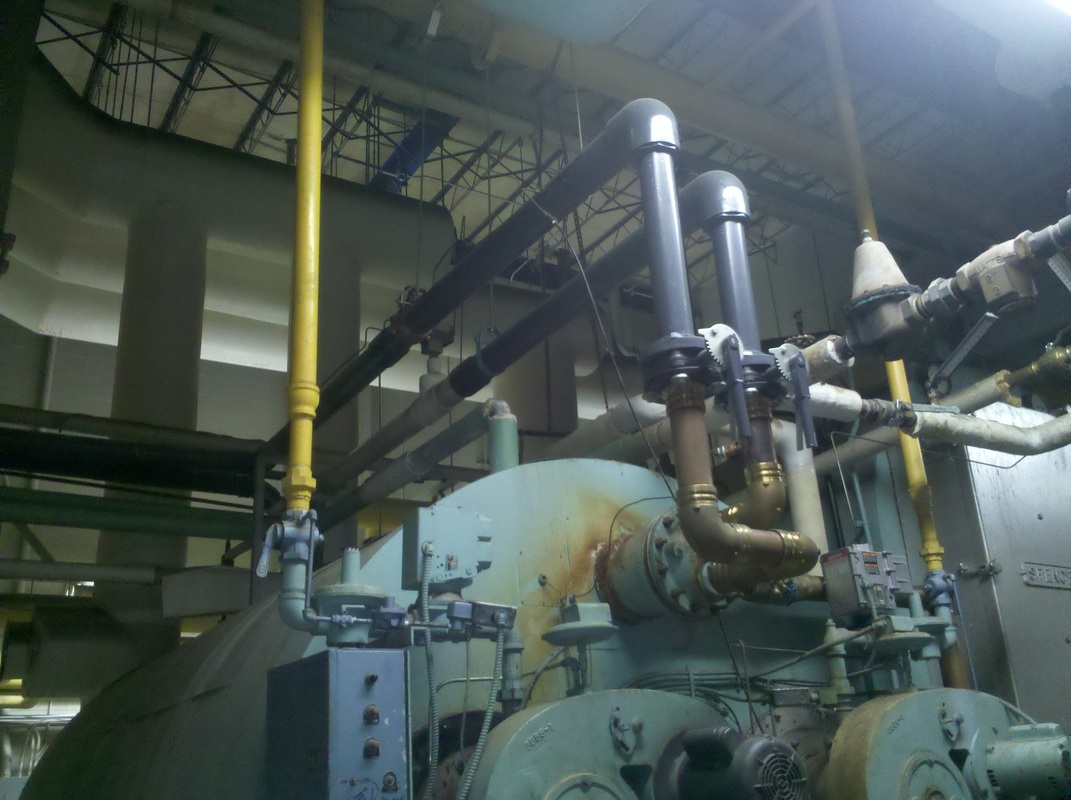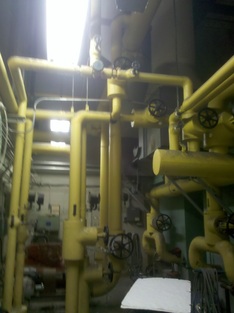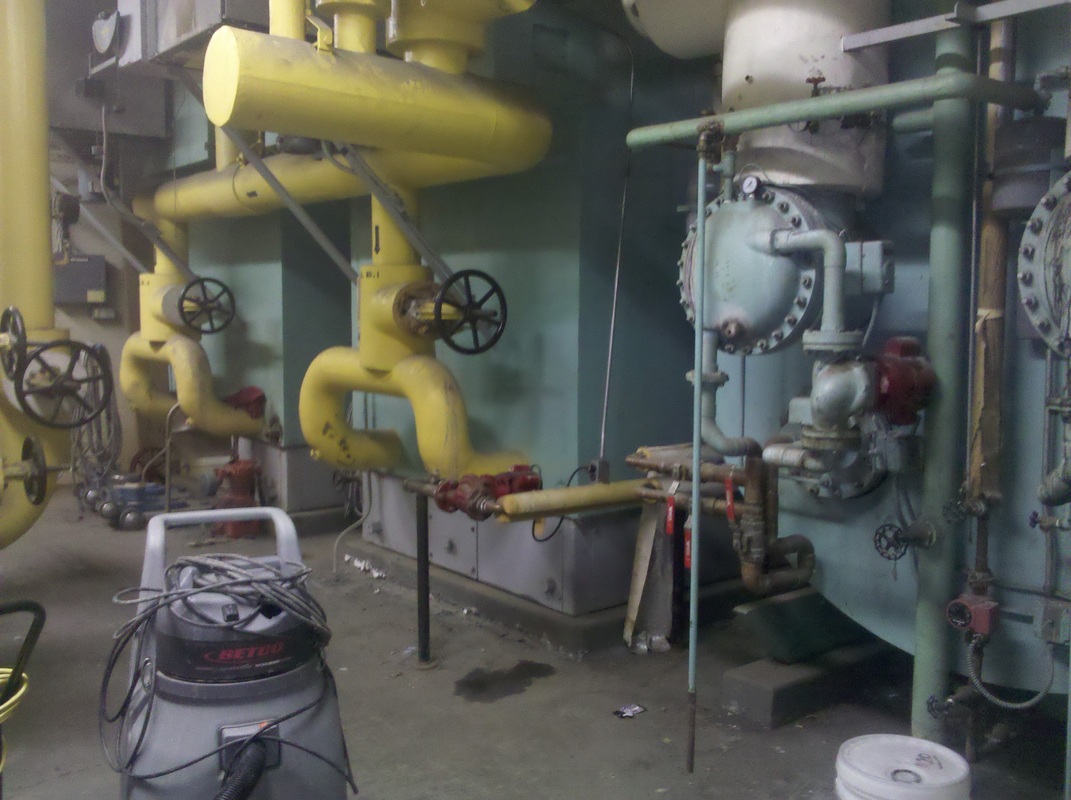By Norb Ogiba
Introduction
MJ Mechanical is in the process of redesigning the existing system that provides heat and hot water for a large building for one of our customers. The building contains office space requiring domestic water (showers, sinks) as well as a swimming pool for the occupants. Our redesign of the existing system required an energy analysis of the current setup in order to be able to size the new
equipment, and to calculate the capacity of the replacements. For the purpose of this case study, we will look at the domestic hot water/pool heating analysis of the project.
equipment, and to calculate the capacity of the replacements. For the purpose of this case study, we will look at the domestic hot water/pool heating analysis of the project.
OBJECTIVE
Our objective is to improve the overall efficiency of making domestic hot water and the heating of the swimming pool. This in turn will reduce energy consumption, and lower overall utility costs. We are aiming to achieve this by eliminating the existing 1970 Patterson Kelley Boiler Maker.
Why replace the old with the new?
- Existing equipment is old and at its life expectancy
- By upgrading equipment with more efficient units, we can match storage capacity and energy consumption to meet the requirements needed today.
- Existing equipment is oversized due to changes in building use. By specifying equipment that is properly sized for the building, we can reduce overall energy usage and thus save on utilities down the road
The above changes will result in lower energy costs for our customer and overall reduced energy usage.
Design Criteria - Existing System Background
The current heating system is an existing Patterson Kelley 1970 Boilermaker. This boilermaker has an input of 3,380,000 BTU’s with a 2500 gallon storage capacity. It is natural gas fired and when brand new, was at an operating efficiency of approximately 80%. With over forty years of use on the boilers, we can safely assume that the efficiency has certainly dropped since new! This boiler provides hot water for general domestic water building services, such as hot water in the showers, sinks, laundry use, dishwashing, etc. The heating system to heat the pool water is also generated by a heat exchanger internal to the Patterson Kelley Boilermaker. Hot water is made inside the boiler and circulated through a liquid to liquid heat exchanger. The domestic hot water is usually made at approximately 160°F and stored at 140°F, where the pool water is generally made at 120°F; once it has circulated through the heat exchanger, it brings the pool to a temperature of 80°F.
The existing equipment consists of the following:
The existing equipment consists of the following:
- Pool/Domestic Hot Water: One (1) Patterson Kelley, 1970, BTU input of 3,380,000, 2500 gallon storage capacity, recovery 3250 GPH from 40-140 degrees F
- Pool Heater Capacity (existing): to heat 150 GPM pool water 70 degree F to 80 degree F using 75 GPM boiler water 140F - 120F. Pool water capacity 228,000 US gallons - 750,000 BTUH
- Pool Heater Capacity (existing): to heat 150 GPM pool water 70 degree F to 80 degree F using 75 GPM boiler water 140F - 120F. Pool water capacity 228,000 US gallons - 750,000 BTUH
Design Conditions
Shower & Domestic Hot Water Load
Total Shower Heads = 99
99 Heads x 66% diversity in operation at once = storage required
2000 gallon storage capacity with a recovery rate of 3200 GPH at 100°F rise
Boiler output required = 2,666,000 BTUH
Total Domestic Hot Water& Pool Loads
Shower Load & Laundry = 2,666,000 BTUH
Pool Load = 750,000 BTUH
Total Boiler Output = 3,416,000 BTUH
Total Shower Heads = 99
99 Heads x 66% diversity in operation at once = storage required
2000 gallon storage capacity with a recovery rate of 3200 GPH at 100°F rise
Boiler output required = 2,666,000 BTUH
Total Domestic Hot Water& Pool Loads
Shower Load & Laundry = 2,666,000 BTUH
Pool Load = 750,000 BTUH
Total Boiler Output = 3,416,000 BTUH
These would be a priority set point for the domestic load in case the pool and domestic require heat at the same time. Domestic would be the priority, since a dozen cold showers will cause much more of a problem for building occupants than if the pool heat was taken away temporarily; the pool is sufficiently large enough to retain most of its heat until the heat source is brought back online, whereas the showers require immediate heat for users.
Thus the estimated load required = 2,666,000 BTUH
Now that our analysis of the building’s required heat is complete, we can use this to select the new equipment.
Thus the estimated load required = 2,666,000 BTUH
Now that our analysis of the building’s required heat is complete, we can use this to select the new equipment.
Selection of Equipment
Boilers
Two (2) Condensing Boilers
Capacity: 1,500,000 MBH each x 2 = 3,000,000 MBH TOTAL INPUT
Gross Output: 1,380,000 MBH each x 2 = 2,760,000 MBH TOTAL OUTPUT
Storage Capacity
Two (2) Hot Water Generators, vertical storage tank round jacketed glass lined
940 gallon storage x 2 = 1,880 gallons gross storage
Total less tube bundle
Net gallons = 1,860 gallons
Two (2) Condensing Boilers
Capacity: 1,500,000 MBH each x 2 = 3,000,000 MBH TOTAL INPUT
Gross Output: 1,380,000 MBH each x 2 = 2,760,000 MBH TOTAL OUTPUT
Storage Capacity
Two (2) Hot Water Generators, vertical storage tank round jacketed glass lined
940 gallon storage x 2 = 1,880 gallons gross storage
Total less tube bundle
Net gallons = 1,860 gallons
Why Not Just Use One Large Boiler That Meets Our Requirements?
By using just one large boiler, the system assumes the entire building load. While one large boiler could handle the load, this is not advised—in the event of a boiler failure, no heat will be supplied to any of the aforementioned processes, causing an emergency for building personnel. By using two boilers, we are able to spread the load (and thus wear/tear and stress) over two units, increasing their service life. It also gives us a “safety net”; if one boiler fails, we are able to produce sufficient heat using the second one until the first unit can be repaired.
What Purpose Do the Hot Water Storage Tanks Serve?
The hot water can be stored at higher temperatures and reduced to supply temperature by mixing with cold water in
blender valves. Storing hot water at a higher temperature increases the system’s overall capacity and reduces the need of storage volume. By giving ourselves room to store the hot water, energy is consumed at a relatively slow rate in heating the water.
blender valves. Storing hot water at a higher temperature increases the system’s overall capacity and reduces the need of storage volume. By giving ourselves room to store the hot water, energy is consumed at a relatively slow rate in heating the water.
Why Use a Heat Exchanger to Supply Warm Pool Water?
The hot water produced inside of a boiler cannot directly be fed into the pool, as the pool water requires many chemicals to keep it sanitary for use that may damage the boiler. It is also important to keep in mind the adverse reactions that the chemicals might have with the high temperatures inside the boiler. The boiler water is instead circulated through (in our case) the shell side of a tube and shell, liquid to liquid heat exchanger, with the pool water being pumped through the tube side. This keeps the boiler water and the pool water separate in order to eliminate problems with the pool treatment chemicals contaminating the inside of the boiler.




 RSS Feed
RSS Feed